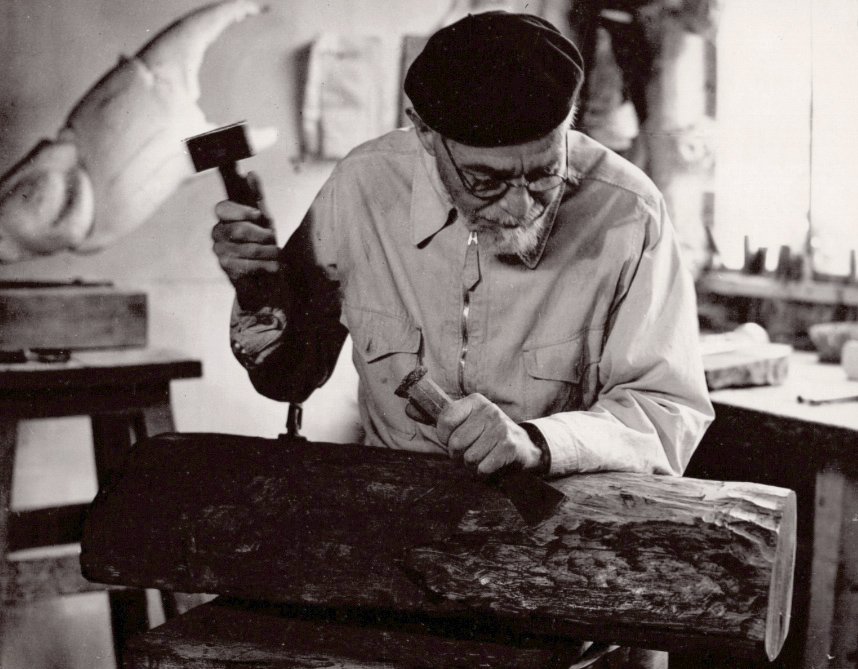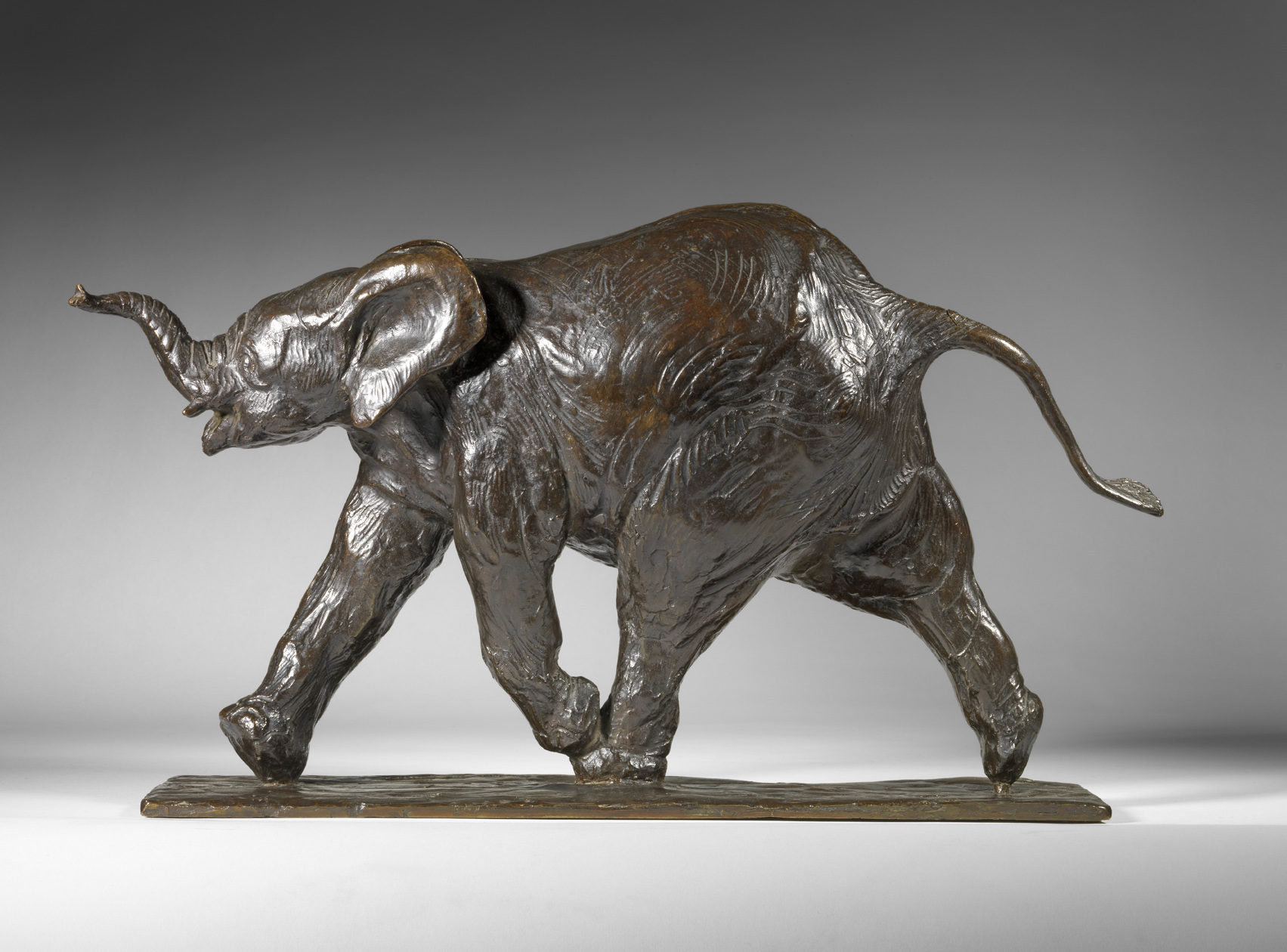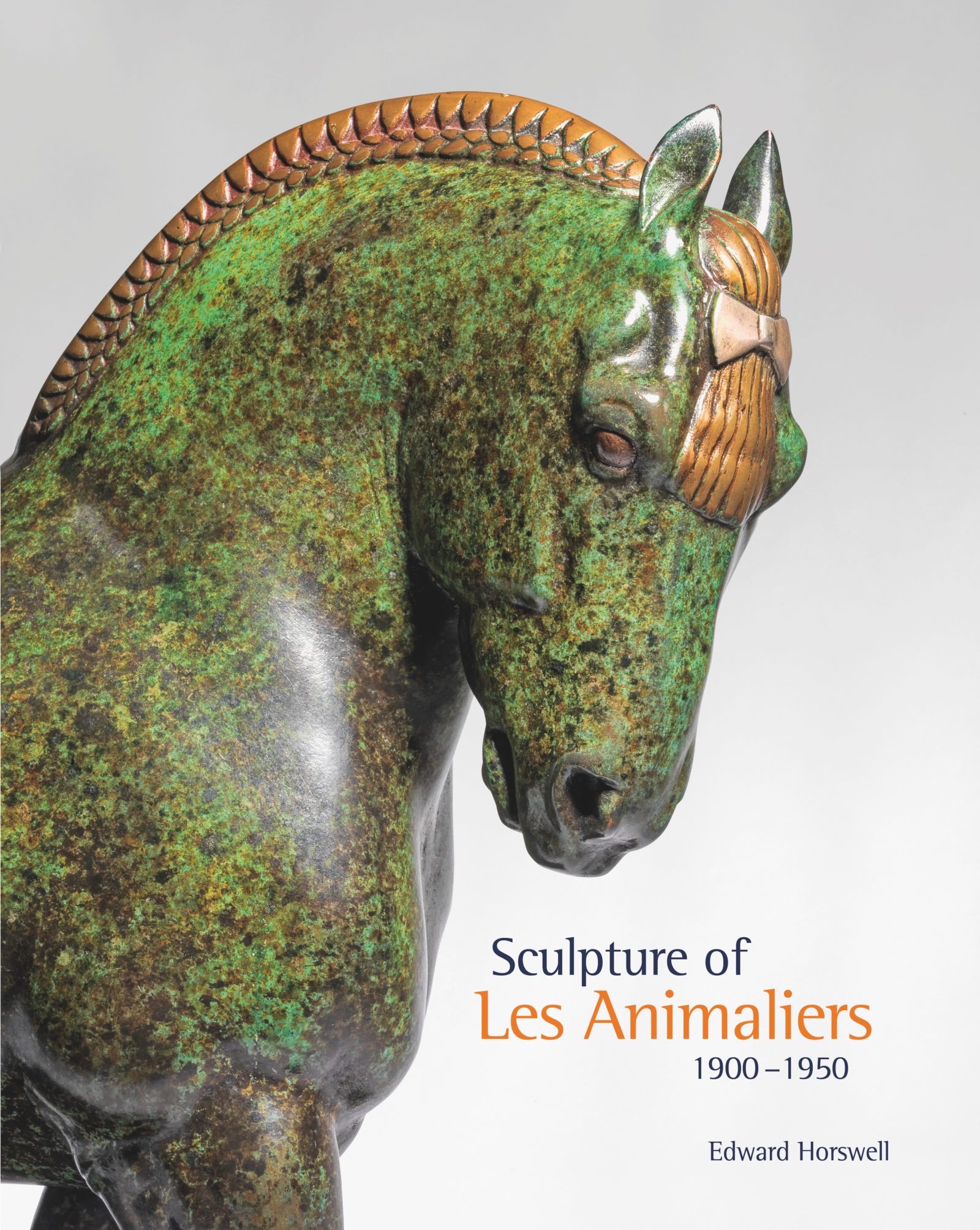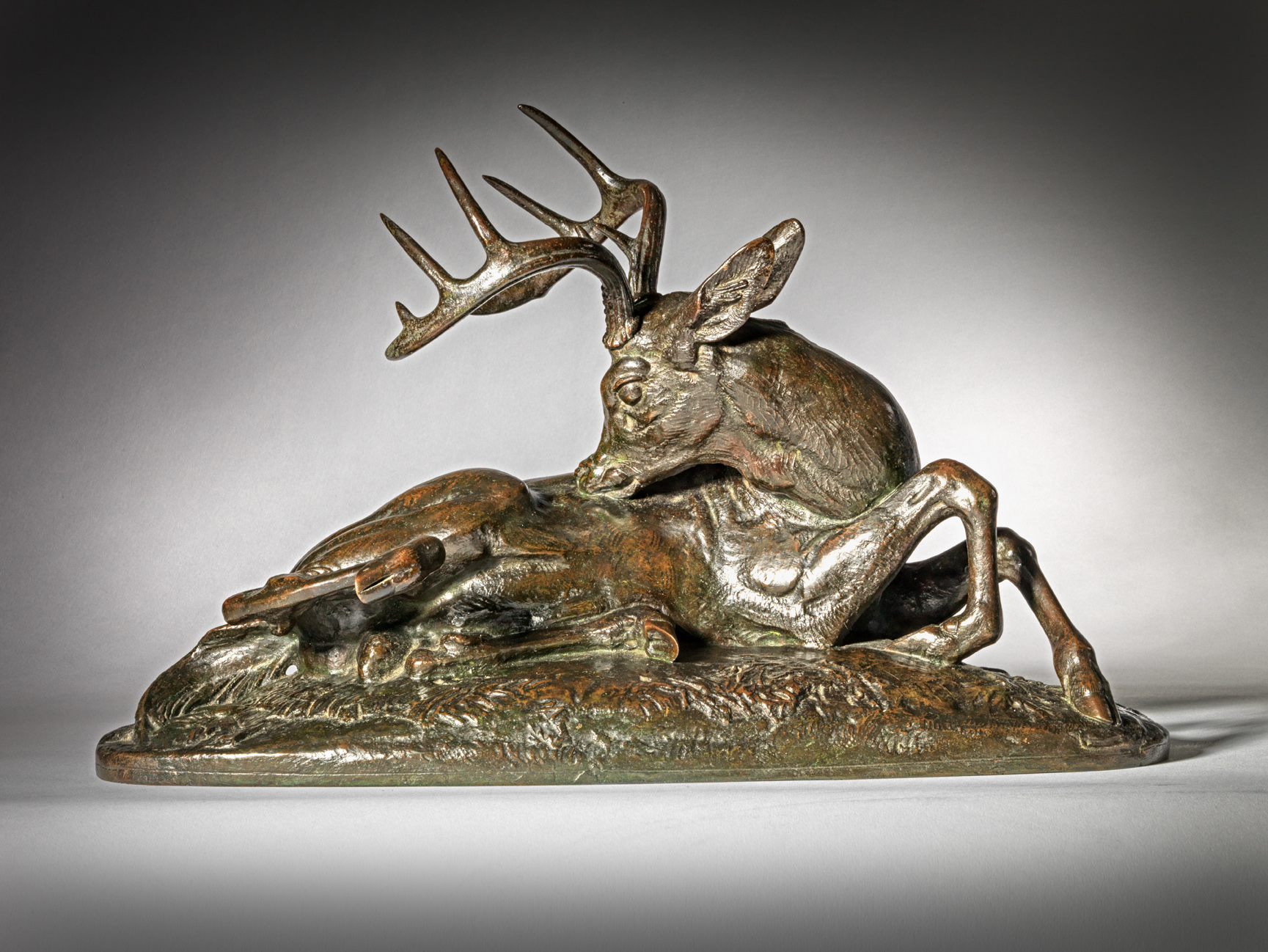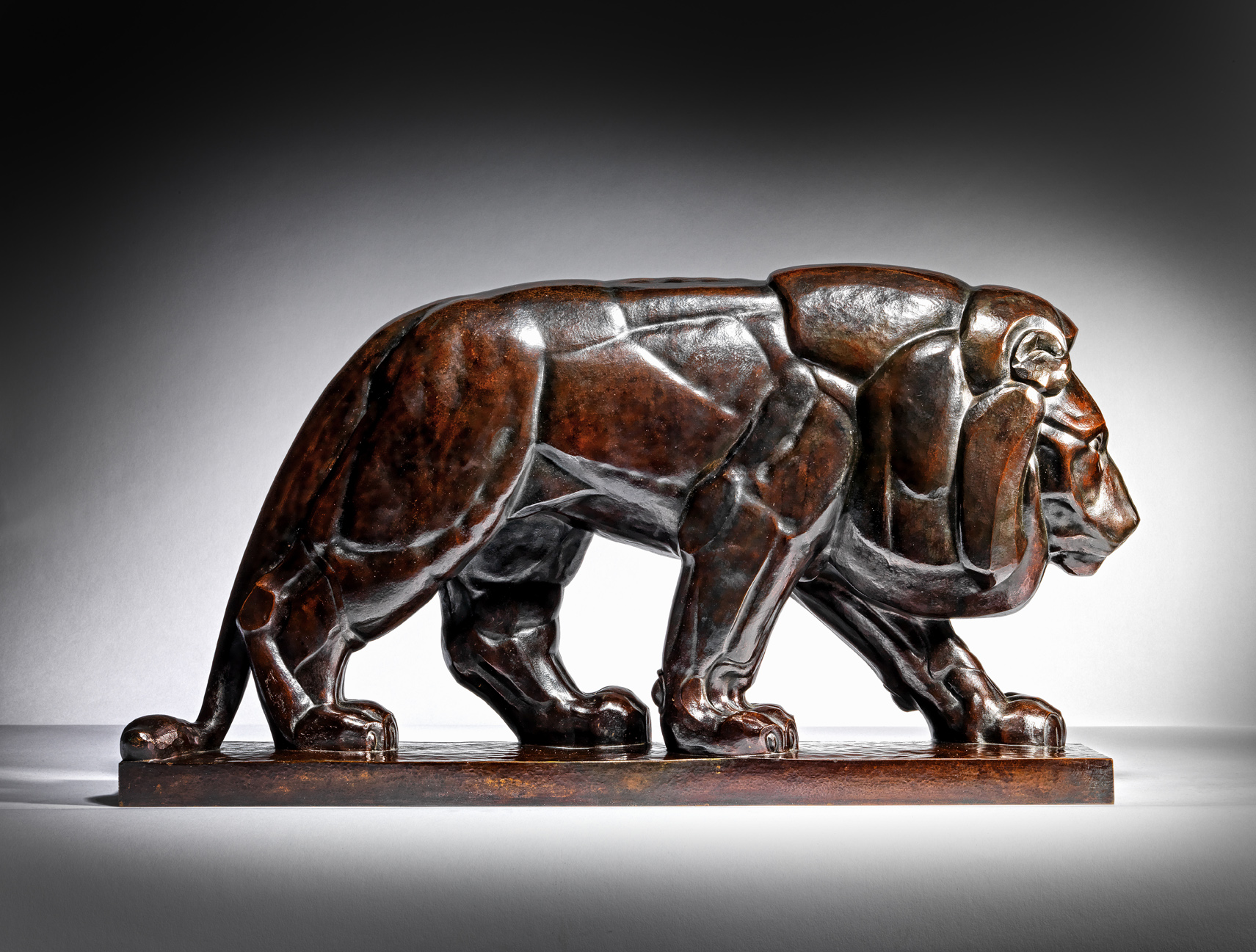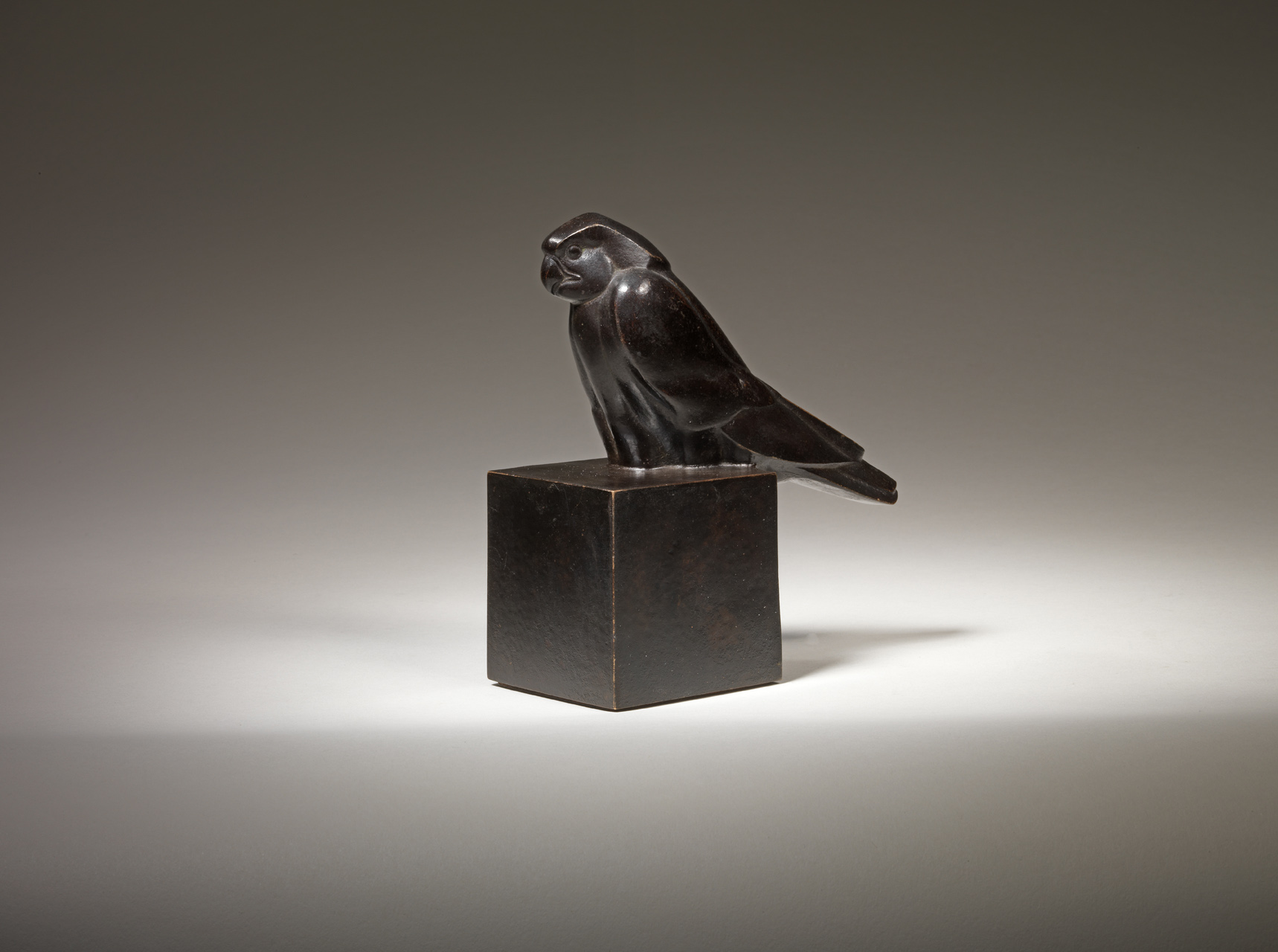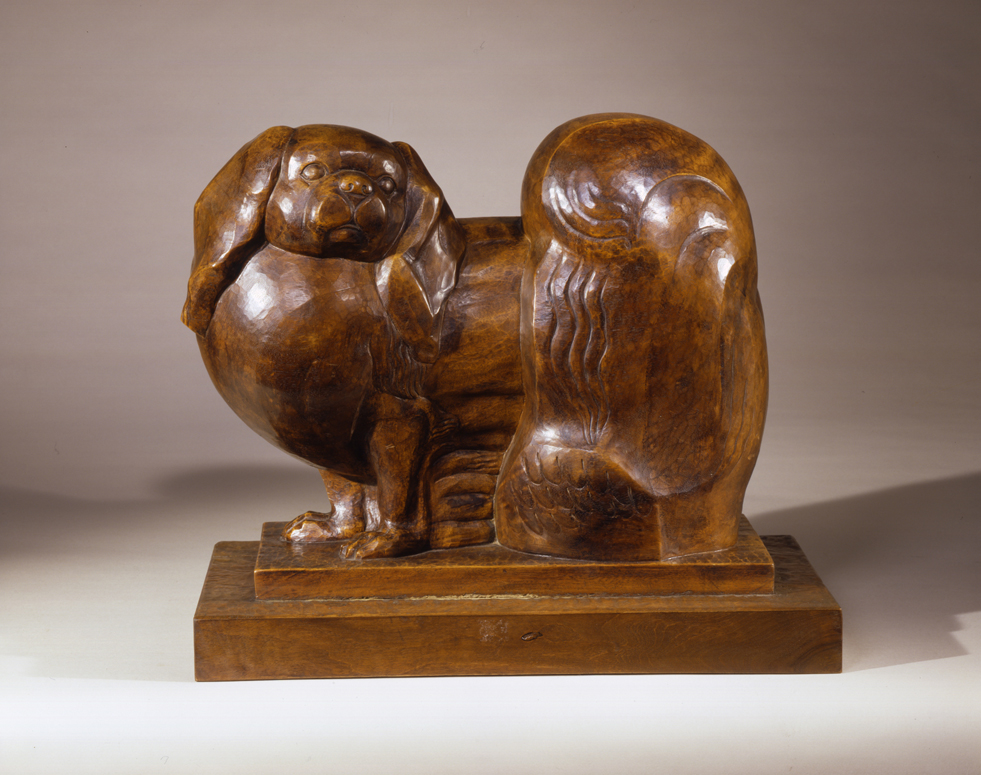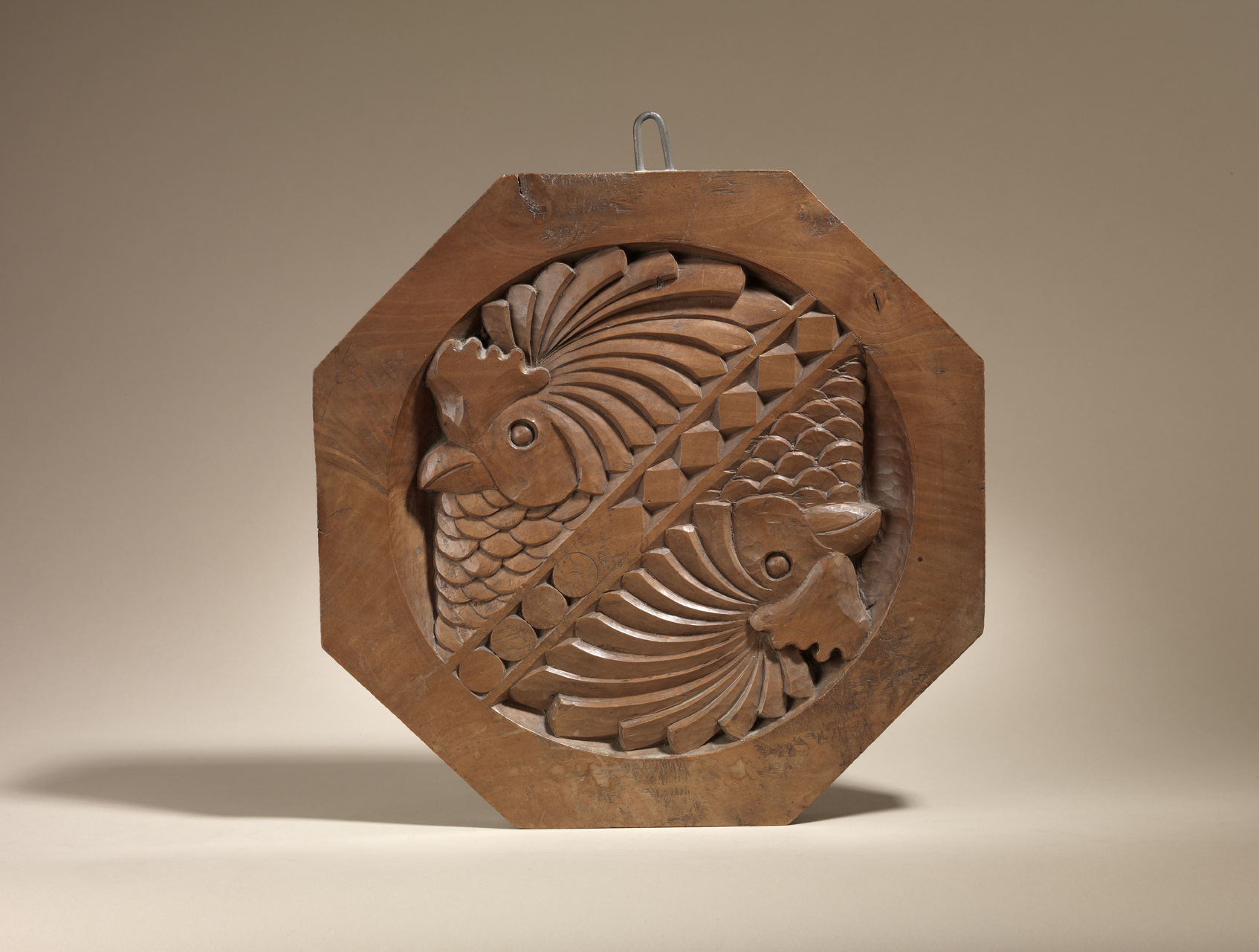Despite being principally a decorative artist and carving most of his output in wood, the works that Le Bourgeois chose to cast into bronze are ideally suited to that medium as well. Sometimes, as in the case of his ‘Head of a Panther’, the surface of the wood original is apparent in the bronze finish, but this in no way detracts from its overall appeal.
Le Bourgeois decorated interiors for private clients and also public spaces. In the mid 1920s he also worked with the designer Emile-Jacques Ruhlman. In the 30s he was head of the sculpture atelier at the école de l’Union centrale des Arts décoratifs. In 1940, he was invited to appear at the prestigious Venice Biennale.
Along with Henri Rapin and Gustave Jaulmes he set up an atelier to provide work for soldiers disabled in the war, making wooden toys of his own design. These were sold with the mark « Jouets de France ». In 1918, he settled permanently in Rambouillet, south of Paris, in a former staging post. Here he led a rural existence far removed from the cliques and coteries of the Paris art world. Between 1920 and 1926, the Sèvres factory bought several models (Ram, Ostrich, Dog, Rabbit, Fox, Cat). His first solo exhibition was held at the Musée des Arts décoratifs in 1921.He showed small statues and busts in the round, bas-reliefs for interior decoration, wood frame sculpture, sketches and photographs. In the same year he was commissioned by the Merchant Navy to do the panelling for the ministerial office and also won the competition for the war memorial in Grasse. In the early 1920s, Vuitton produced editions of small items in ivory such as mirror, paper knives and boxes. The Sèvres factory used some of his animals to decorate the garden of its Pavillon at the Exposition des Arts décoratifs in 1925 and also edited them in a smaller version. After this he was made chevalier de la Légion d’Honneur.
Le Bourgeois decorated interiors for private clients (the château du Planet belonging to the architect André Ventre, the homes of the Guigoz family in Switzerland and the parfumier Chiris in Grasse, for example) and also public spaces (the nightclub La Pie qui chante in 1920, the Bar Prunier in 1925, foyer of the Salle Pleyel in 1927, Frise du Palais des bois coloniaux at the Exposition coloniale in 1931, interior decoration, notably a Chemin de croix in the chapel of the liner Normandie in 1933, the smoking room in the liner Pasteur in 1939). In the mid 1920s Le Bourgeois also worked with the designer Emile-Jacques Ruhlman. In the 30s he was head of the sculpture atelier at the école de l’Union centrale des Arts décoratifs. In 1940, he was invited to appear at the Venice Biennale. The State bought many of his pieces.
His work was assembled for a final solo exhibition at the Pavillon de Marsan in 1947. He died in Rambouillet in 1956, where there have since been several exhibitions of his work and posthumous tributes. Le Bourgeois’ work was suffused with a modernism suited to the large decorative projects of the inter-war years; this was also the case in his mode of working, as he did not conceal the fact that he was prepared to use power tools. Despite this, his skill inherited from a long artisanal tradition, his style derived from a revisited medievalism (as symbolised by his Chrysalide in 1913), make him a typical artist in the « tradition française » celebrated between the wars in a fantasy renaissance of the « ymagiers du Moyen Age ». He prepared his work with very precise drawings and clay sketches moulded in plaster, which he used as a guide for carving. He could thus provide several identical proofs carved from the one model.
He mainly worked in wood, his favourite material, (sometimes polychrome), stone, ivory, Portland cement, lead leaf applied to a cement core and flint mosaic. He decorated certain gardens including his own with enormous figures of animals, made from heaped up millstones. Unusually for him, in 1937 he gave a dozen or so original models to the founder-editor Colin, who wanted to get involved in modernism. Le Bourgeois visited the Jardin des Plantes and Antwerp Zoo d’Anvers for some exotic models. These were specifically conceived on a large scale, which he considered best suited to casting in bronze. They were cast in limited series of 25 proofs all authenticated and mounted on their plinths by le Bourgeois himself.
Artworks
View all Artworks >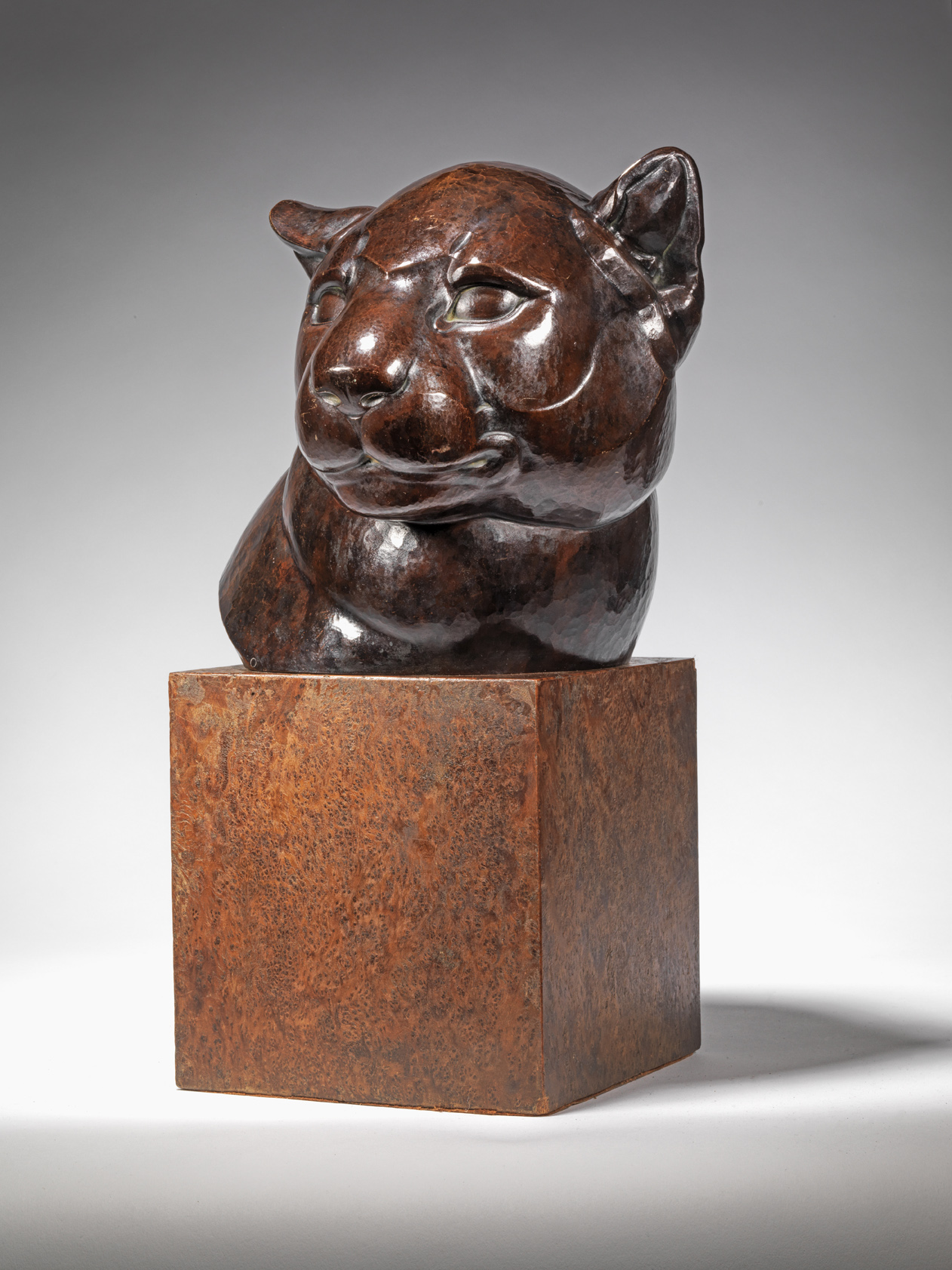
Head of the Panther Bagheera, c. 1930
Gaston Le Bourgeois
A good quality, rare, early twentieth century bronze model of a head of a panther entitled ‘Tête de la Panthère Bagheera’ by Gaston Le Bourgeois […]


